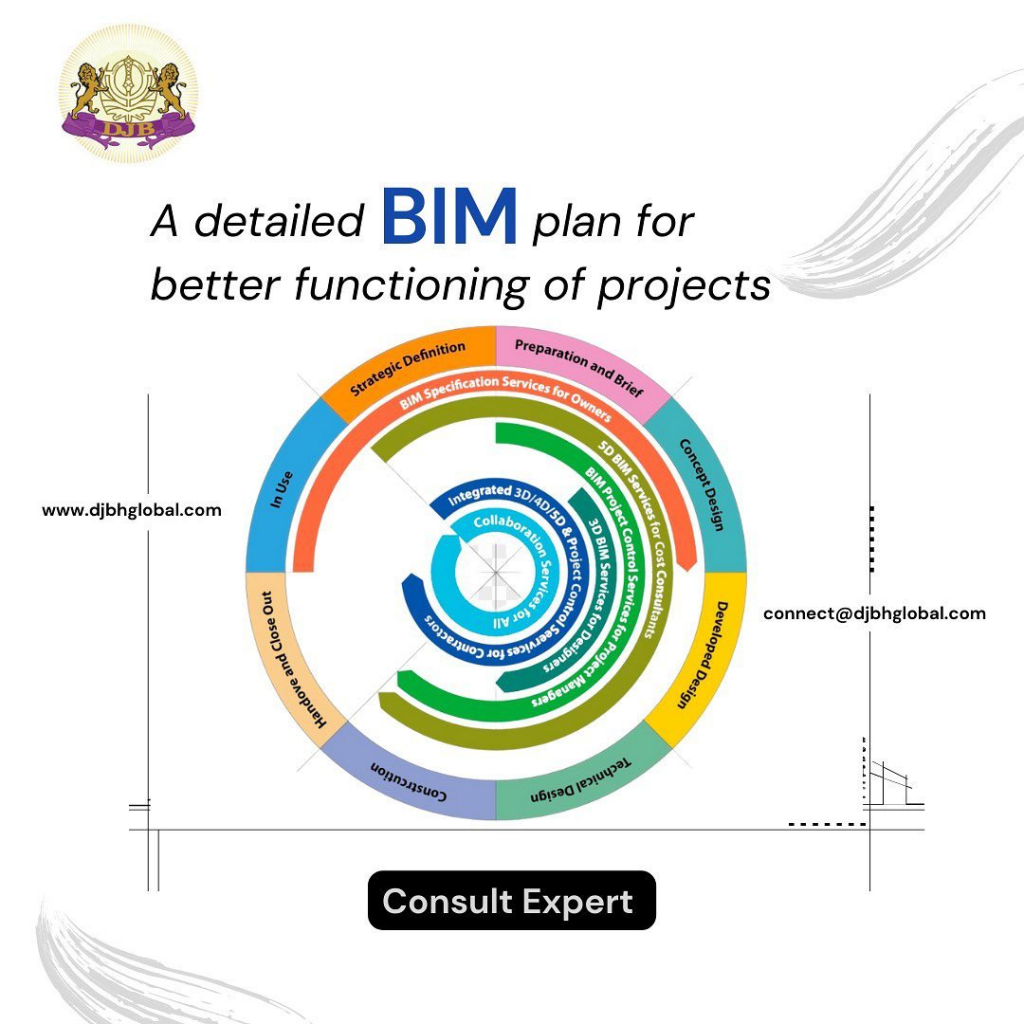Building Information Modeling (BIM) has become an essential tool for architects, engineers, and construction professionals as the architecture industry embraces technology. However, effective collaboration in BIM requires clear and effective communication among team members. In this blog post, we’ll explore the role of communication in BIM and architecture and provide tips for effective collaboration.
What is Building Information Modeling?
Building Information Modeling, also known as BIM, is a digital representation of a building’s functional and physical attributes. BIM provides architects, engineers, and construction professionals with a comprehensive view of a building’s design, construction, and maintenance. BIM software allows teams to create, share, and manage digital models incorporating design elements, construction details, and building systems.
The Role of Communication in BIM and Architecture
Effective communication plays a crucial role in the successful completion of a BIM project. Communication breakdowns can lead to mistakes, delays, and cost overruns. The following are some ways in which communication plays a critical role in BIM and architecture:
- Enhancing Collaboration
Effective communication enables stakeholders to collaborate efficiently, share ideas, and collaborate effectively—collaborative tools and techniques such as online platforms and project management software help to facilitate communication and collaboration.
- Improving Understanding
Clear and concise communication ensures that all stakeholders understand project requirements, timelines, and deliverables. It helps to minimize misunderstandings, errors, and rework.
- Managing Expectations
Communication helps to set expectations, manage changes, and resolve conflicts promptly and efficiently. It ensures that you are informed about project progress and any issues that may arise.
- Improving Decision Making
Effective communication empowers you to make informed decisions by providing them with the necessary information to Evaluate the advantages and disadvantages of different alternatives. As a result, they have access to relevant data.
- Enhancing Productivity
Good communication ensures that you are aligned and can work effectively towards project goals. It improves efficiency, reduces delays, and helps to deliver projects on time and within budget. Communication is essential in BIM and architecture projects. It helps build strong relationships between you and your team, and ensures the project is delivered successfully.

DJBH Global places great emphasis on communication in order to boost productivity. At DJBH Global, effective communication is seen as a vital tool for achieving the company’s goals and ensuring that all employees are working efficiently.
Tips for Effective Collaboration in BIM and Architecture
Here are some tips for effective collaboration in BIM and architecture:
- Establishing Clear Communication
Clear and concise communication is vital for effective collaboration. Establish regular meetings and communication channels to ensure you are updated on project progress and changes.
- Set Clear Goals and Expectations
Establish clear goals and expectations for the project, including your roles and responsibilities. This prevents confusion and misunderstandings that can cause delays and errors in the project. Clearly defined goals and expectations also provide a framework for decision-making and problem-solving, allowing you to prioritize tasks and focus on the crucial part for the project’s success.
- Use Collaborative Tools
Utilize collaborative tools and software to streamline communication and improve project efficiency. Online platforms like BIM 360 allow you to share information and collaborate in real-time.
- Foster a Collaborative Culture
Create a collaborative culture by encouraging open communication and teamwork. Recognize and reward collective behaviors and provide opportunities for you to work together with your team and share ideas.
- Build Trust
Building trust between you and your team is crucial for effective collaboration. Establishing trust takes time but can be achieved by being transparent, honest, and reliable.
- Manage Conflict
Conflicts can arise in any project, but managing them effectively is key to maintaining collaboration. Encourages you to express your concerns and perspectives and work towards finding mutually beneficial solutions.
- Encourage Innovation
To remain competitive and achieve project success, innovation is crucial. Encourages you to share ideas, take risks, and provide opportunities for experimentation and learning.
- Embrace Diversity
Embracing diversity can bring new perspectives and insights to a project. Urges you from different backgrounds and disciplines to participate and contribute to the project.
- Continuous Improvement
Continuously review and improve collaboration processes to ensure they are practical and efficient. Solicit feedback from your team and adjust strategies as needed.
Clear communication, trust, and a collaborative culture are necessary to achieve effective collaboration in BIM and architecture projects. You and your team can work together towards project goals by using collaborative tools, managing conflict, promoting innovation, and embracing diversity. It’s also important to continually learn and improve to maintain effective collaboration in the long term.

DJBH Global is committed to equipping its team with the right skills for continuous improvement. The company recognizes that continuous learning and development are essential for staying ahead in today’s rapidly changing business landscape.
The Importance of Communication in the World of BIM and Architecture
Effective communication is crucial in BIM (Building Information Modeling) and architecture. As projects become increasingly complex, involving multiple teams with different backgrounds and areas of expertise, the need for clear and efficient communication becomes more critical than ever.
- Collaboration
BIM and architecture projects require collaboration between multiple collaborators, including architects, engineers, contractors, and owners. Effective communication is essential to ensure that you and your team are aligned with the project’s objectives, have a shared understanding of the project requirements, and can work together seamlessly to achieve the desired outcomes.
- Decision Making
BIM and architecture projects involve numerous decisions that impact the project’s success. Clear and effective communication is vital to ensure that you and your team are informed and engaged in decision-making, enabling you to provide input and feedback on important project decisions.
- Risk Management
Effective communication is essential for risk management in BIM and architecture projects. By communicating effectively, you can identify potential risks early and develop strategies to mitigate them, reducing the likelihood of delays, errors, and cost overruns.
- Quality Control
Clear communication is essential for ensuring quality control in BIM and architecture projects. Doing so can ensure that all project requirements are met and that work is completed to the required standards.
- Client Satisfaction
Effective communication is also critical for client satisfaction in BIM and architecture projects. Through clear communication with clients, you can ensure that you are meeting their expectations and that they are happy with the outcome.
Effective communication is vital in BIM and architecture, enabling you to collaborate, make better decisions, manage risks, ensure quality control, and satisfy clients.
Final Thoughts
Effective communication plays a pivotal role in the success of Building Information Modeling (BIM) and architecture projects. Clear and efficient collaboration among stakeholders is crucial to maximize the benefits of BIM technology and achieve outstanding architectural outcomes. In this blog, we have explored the key aspects of communication in BIM and provided valuable tips for enhancing collaboration.
By fostering open lines of communication, establishing clear objectives, and leveraging digital tools, architects, engineers, contractors, and clients can work together seamlessly, streamlining processes, minimizing errors, and delivering projects with greater efficiency and accuracy.
However, successful communication goes beyond the project team. It requires the support of reliable and innovative partners. That’s where DJBH Global comes in. As a leading provider of BIM services and solutions, DJBH Global offers the expertise and cutting-edge technology necessary for effective collaboration in BIM projects. Our experienced team understands the nuances of architecture and BIM, ensuring smooth communication and seamless integration throughout the project lifecycle.
To take your BIM and architectural collaborations to the next level, partner with DJBH Global. Visit our website today to learn more about their comprehensive range of services and solutions. Together, let’s revolutionize the way we communicate and collaborate in the world of BIM and architecture. Contact us now!
